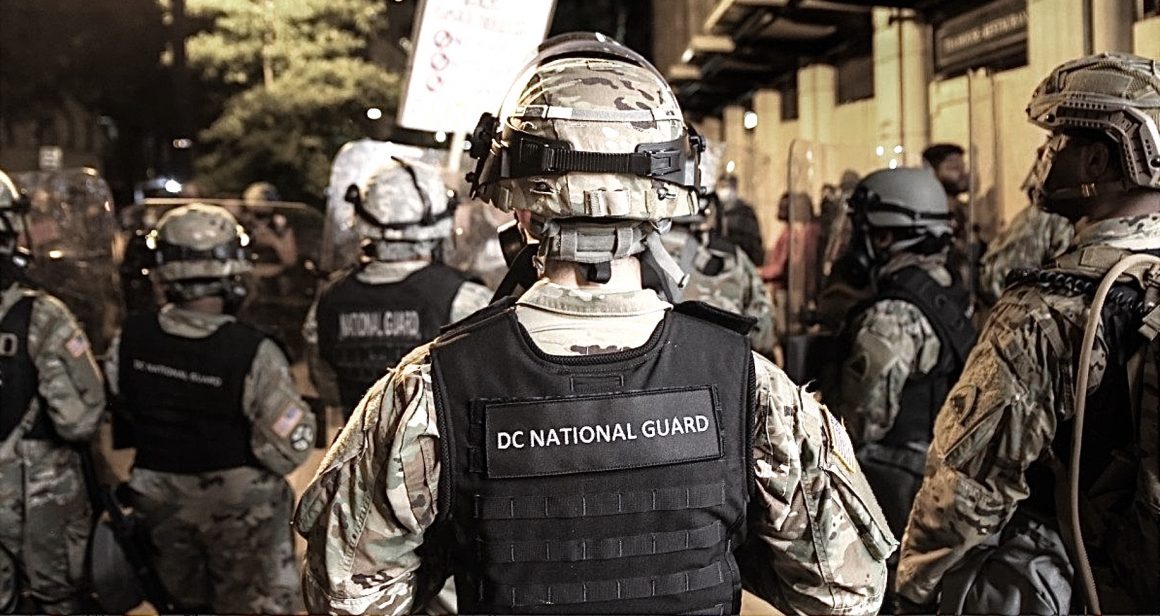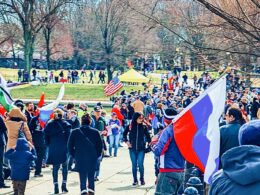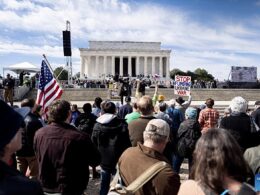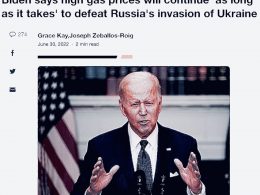I recently discovered that my expectation about how a 9.0 earthquake has a 3 in 10 chance of happening in my area in the next fifty years was mistaken. It was mistaken because the idea about how there’s a “37% chance of the Cascadia quake being in the next half-century” is a popular myth, a myth that gives a false sense of security. The truth is that we shouldn’t be thinking about the likely date for when the Cascadia subduction zone breaks in terms of the next five decades, but in terms of the next two decades.
Doubt in the 37% number starts appearing when you ask: how can it both be true that we’re overdue for the next 9.0 quake, and that the quake most likely won’t happen during the next generation? And this isn’t me engaging in a scientific fallacy, because there is in fact no reason why the latest tectonic pressure buildup cycle will take such an abnormally long time to be completed. I say an abnormally long time because upon looking at the frequency of 9.0 earthquakes in the region over the last 10,000 years, there’s no precedent for the cycle lasting longer than a little under three-and-a-half centuries. And the last time the cycle became completed was in 1700, with the latest quake of that scale. As Surviving Cascadia puts it after doing an honest statistical analysis, “we only have 22 years until the PNW [Pacific Northwest] passes the longest interval during this time frame.” To strengthen this argument, this spring scientists discovered a leak at the bottom of the ocean off the Oregon coast, indicating that the plates are already building up enough tension to make the quake a short-term prospect.
Obviously it’s a coincidence that the Cascadia quake appears overwhelmingly likely to happen during the same couple of decades when the other destabilizing events I’ll describe here are to take place. Cascadia is not man-made, it isn’t one of the many destructive products of capitalism in decline. But the extent to which it will cause death, destruction, and social decline is absolutely going to be exacerbated by our socioeconomic system. A system which it will take a revolution to transition away from, and which therefore will likely still be in place here when the quake happens. And from the perspective of civilizational rise and fall, it’s unsurprising that this is the era when the United States will undergo a crisis large enough to leave an irremovable scar on its economy and wider social stability. The society that the settlers built has been in California for less than three centuries, the localities in my area were all created many decades after the last Cascadia rupture.
The construction of this civilization was not informed by the knowledge about our region’s earthquake reality that indigenous peoples had been compiling for many thousands of years. Instead of consulting these peoples, the newcomers forcibly relocated and virtually exterminated them through the California genocide, one of history’s greatest atrocities. Then the settlers designed infrastructure and buildings that were so ill-equipped for the next Cascadia quake, schools and hospitals didn’t start being required to get built according to seismic safety standards until the 1990s.
In their arrogance, the creators of this empire thought that they could build one of the globe’s vastest economies on these foundations, and then not have that economy’s size ironically work to the country’s disadvantage when the quake happened. Cascadia, and the smaller San Andreas quake that the former could set off, are going to make the operations of the west coast’s biggest corporations untenable. These companies are going to relocate, along with many of the region’s smaller businesses and much of the region’s less-prepared residents. What will be left is a giant sacrifice zone. I say this because even though FEMA has prepared what will be the biggest disaster mobilization in the country’s history, where police, troops, and international aid workers descend on the region in record numbers, the ways our government has responded to Covid and the century’s first climatic disasters show that the working class won’t be saved. Only the bourgeoisie will.
On the coast, which is where the shaking will be in the violent category and where a tsunami of over a dozen meters will hit, it will take around three years for electricity, indoor plumbing, highways, and medical services to all be accessible again. The electrical grid, the comparatively easiest one of these things to repair, could be out for at least half a year. It’s clear that these aspects of the recovery will take so long not just from the extent of the anticipated destruction, but from how the U.S. government has taken around a year to restore power to places like Puerto Rico after its 2017 hurricane. A bourgeois state that’s built on the exploitation of indigenous territories and racial terror, and that gets more heavily invested in war as its decline continues, is going to be even less willing to assist the region’s most vulnerable populations a couple decades from now. We’ll be even further along the country’s process of breakdown.
Beyond the aid, the opportunities for mass evacuations, and the (delayed) repair operations, our government will leave us in a situation where our living standards have been greatly reduced in the long term. With the region’s former tech industry now in other parts of the country, all that will be left is an enormous population that’s come to lack economic value, and that therefore can be discarded. Jobs will disappear, and corporations will buy up all the land that gets left behind.
I predict these things because as I observed, if we can expect this event within the next two decades, the capitalist state will likely still be ruling my part of the world at the same time it occurs. Our revolutionary organizations aren’t yet at the stage where they can challenge the state in an immediate sense. Unless the class struggle develops a bit faster than I expect, this is the system my area’s people will be living under during the coming emergency. Yet unlike a time such as the 1970s, when an effective communist party could be built but the U.S. empire’s crises weren’t advanced enough for the system to be in danger, we’re now in a moment when a revolutionary project could succeed within a generation. And depending on how well we work on this project, the quake and the other shocks the country will experience could represent decisive points in the story of the bourgeois state’s downfall. Like the world war and related economic crisis that Russia experienced right during the same time when the czars’s forces abandoned him.
——————————————
Cascadia isn’t the only power grid-destroying event that there’s good reason to expect the United States will see during the next two decades. In a study about the effects of global warming on U.S. infrastructure, Pentagon researchers talk about the time scale of the breakdown in similar terms, exploring the possibility of a country-wide electrical system unraveling during the “next 20 years.” The time when the study was put out represents more of a reason to take the researchers seriously about this being the likely window of time for the collapse. To illustrate what I mean, here are the words me and my friend recently exchanged when I started talking about the study:
Him: are you sure it’s accurate? It might not have taken Covid-19 into account.
Me: it did. It said that the next pandemic isn’t a matter of if, but when.
Him: hmm. When did the report come out?
Me: fall of 2019.
Him: what? Oooh, boy.
The report is titled Implications of Climate Change for the U.S. Army. Its thesis is apparent from looking both at its prescriptions for the imminent crises it describes, and at the ways the military has responded to these crises in their early stages. This thesis is that an expanded and permanent military presence within the U.S. is how to respond to the country’s destabilization. Covid-19–which won’t be the last or even the least severe virus we see, given how global warming has destabilized the biosphere—prompted the armed forces to get far more involved in public life. As have the weather disasters the country has been experiencing, including the 2021 Texas electrical failure.
What would prompt the military to make its responses to the country’s intensifying disasters less benevolent than mere National Guard aid efforts, and effectively impose martial law on large parts of the country, is an uprising. Which isn’t a scenario that the 2019 report talks about, but it is something that U.S. military researchers have made a pattern of discussing since the 2008 crisis magnified class contradictions. In its analysis about how to better anticipate destabilizing events, the 2019 report describes 2008 as an example of when the system’s operators have failed to see approaching dangers:
The real challenge with black swan events is not accurate anticipation, but timely recognition. While it can be useful to imagine what might happen, we should focus more on recognizing what is happening as quickly as possible and limiting the damage through timely learning. The black plague took half a decade to advance from Sicily to the Baltic states. More recently, the 2008 financial crisis is already remembered as a “shock” event that surprised global finance. However, the truth is more nuanced, and depressing. Notable observers of the system (including Dr. Taleb) recognized serious problems long before the fall of Lehman Brothers in September, 2008 (and the onset of a full-blown banking crisis). Yet this was mostly recognition, not prediction. The clearest early signal of big trouble in the mortgage market came in the March-April, 2007 collapse of New Century Financial, an originator of risky mortgages, almost a year and a half before Lehman’s end, and a year before Bear Stearns was rolled up. What happened in the meantime? In All the Devils Are Here, Bethany McLean and Joe Nocera describe two embattled Bear Stearns asset managers who provide a microcosm of the wishful thinking that made the crisis much worse than it needed to be. In the face of mounting evidence that their investment strategy is failing, “the two men simply couldn’t bring themselves to believe that the picture was as dire as the model suggested.”
As Surviving Cascadia says, “We prepare — or choose not to — based on our perceived risk.” The U.S. national security state has come to perceive widespread systemic breakdown as a relatively short-term risk, and has prepared by creating a mobilization plan (implied within the report) that effectively applies the Cascadia quake FEMA response protocol to the rest of the country. There’s no doubt that these crises are coming, and that our government is going to respond to them by further militarizing society. This breakdown, like Cascadia, could come sooner than we’d like to believe. An El Niño is likely to start this year, which will magnify existing weather extremes and speed up the disruptions towards agriculture which global warming is causing.
Where there’s still uncertainty is in whether these disruptions are going to produce victory for the proletarian movement. If the revolutionary organizations don’t grow strong enough, whatever spontaneous revolts that our deteriorating conditions produce won’t bring the state’s demise. The state will be able to divert and repress them, like it did with 2020’s protests.
By grow strong enough, I don’t necessarily mean get enough recruitment numbers, as a smaller cadre can be a better cadre. I’m also talking about these organizations gaining the structural attributes to be able to navigate our circumstances, which includes a series of survivalist protocols. For those in my area, these protocols are the thing that will separate us from an outcome where our revolutionary project gets demobilized by these crises, and an outcome where we assert control over history amid the upheavals. The Art of War observes that “in the midst of chaos, there is also opportunity.” In the chaos that our society is beginning to experience, the state is the one that has everything to lose, while we’re the ones that have everything to gain. When we view the imminent catastrophes from this perspective, we gain the right mentality for becoming active historical agents.
——————————————
I can’t speak for everyone who will be impacted by the quake on what they should do, and whether they should stay. I do know that if I can stay in the area, I will. The only way I’ll have left is if the quake happens after the class conflict seriously escalates, revolts start being successful in the big cities, and me and my cadre have to flee to the Bay Area to avoid being picked off by the local fascists. Prior to a politically related displacement scenario like that, the quake will probably have happened. And I’ll need to be here to fulfill a series of tasks, tasks that keep becoming clearer as the class struggle grows tenser.
Should the quake happen prior to when our revolutionary orgs have strengthened enough to materialize those revolutionary urban revolts I described, I plan to use my time offline to continue the struggle in other areas than online commentary. I can’t change the reality that my online projects will one day be put on a long hiatus, so I’ll have to do what I can given the circumstances. When that day comes, and you start finding that all my online profiles are inactive and no one is able to reach me, the best way you can help with my situation is by continuing to fight the online informational war. If I know the work I’ve done will inspire others to redouble their resistance towards imperialism’s psyops when I’ve been made inaccessible, I’ll have done my job for the time being. What I’ll need to focus on is keeping a cadre going, when we’ve been cut off from the systems that make this as convenient as it is now.
This is something that communists across the country have to be thinking about, because the equivalent could happen to them. The platforms we’re using are only temporary, aside from better ones like Substack or Telegram that aren’t eager to censor anti-imperialists. And even these ones won’t be options if the power grid goes down, or the military shuts off the Internet (which it’s been making plans to do in the areas where civil conflict breaks out). This task of survivalism feels like an overwhelming thing to add on to all of the other jobs cadres need to be doing, but unlike the right-wing or apolitical preppers, we’re not doing it simply for the sake of surviving. We’re doing it to be able to overthrow the state and replace it with a proletarian state. Which gives a purpose to our challenges that wouldn’t be present if we didn’t know the liberation theory which informs our actions.
For me and my cadre to survive as one unit, most of the things I’ll need as a minimum are water filtration and transportation equipment, a small portable stove, a tent, and hunting or fishing tools. What exact items you’ll need depends on whether you’ll have access to a yard, but I’m sure you can figure that out on your own. The important thing is that we get the items and the pre-blackout protocols to be able to remain in contact with our local cadre members after the disruption. We can’t become isolated to ourselves and our families, we need to expand who we consider “family” and make sure that the radicals we work with will be part of our lives throughout the blackout. If you’ll be in such a compromised situation that you have no choice but to evacuate your area, this doesn’t necessarily apply to you. My point is we should minimize how much these events hinder our revolutionary work, because every day of work is precious in this task.
I’m so determined to stay where I am because I know the value of the land I’m on. Northern California is one of the few places in the country that will get wetter, not drier, as the planet warms. Its vast natural assets in the forests are going to be helped by the increasing rains, and its agricultural capacity will be made far greater. When almost everywhere else is withering away, the logical thing to do for me in the long term is be stubborn in staying on this land. It has the potential for an incredible future, as long as we build socialism within it. My homestead garden project, with its potential for being a help to the community during the quake’s aftermath, feels like it could be a prelude to what my area as a whole will become in relation to the surrounding region. It will increasingly be a center for life, even though for a time it will be hit the worst by our seismic events. The coast in particular is a haven, despite its being the place where the shaking will be most extreme. Because if you stray just a few kilometers inland, you’ll be vulnerable to the area’s ever-intensifying fires. If we can slightly relocate our communities to above the places that will get inundated by sea level rise, the meter-long ground level drop the quake will produce, and the growing rain floods, we’ll be able to host a climate safe zone.
This is one optimistic part of the situation we’re facing. A situation where within the next generation, the country is to be battered by a compounding series of disasters. The more the climate crisis accelerates, the more strained our systems will become, and the less able our infrastructure will be to accommodate communities that get overcrowded with internally displaced persons. A 2019 New York Times report describes how:
Across the United States, some 162 million people — nearly one in two — will most likely experience a decline in the quality of their environment, namely more heat and less water. For 93 million of them, the changes could be particularly severe, and by 2070, our analysis suggests, if carbon emissions rise at extreme levels, at least four million Americans could find themselves living at the fringe, in places decidedly outside the ideal niche for human life…One influential 2018 study, published in The Journal of the Association of Environmental and Resource Economists, suggests that one in 12 Americans in the Southern half of the country will move toward California, the Mountain West or the Northwest over the next 45 years because of climate influences alone. Such a shift in population is likely to increase poverty and widen the gulf between the rich and the poor. It will accelerate rapid, perhaps chaotic, urbanization of cities ill-equipped for the burden, testing their capacity to provide basic services and amplifying existing inequities. It will eat away at prosperity, dealing repeated economic blows to coastal, rural and Southern regions, which could in turn push entire communities to the brink of collapse.
Workers democracy is how to undo this damage, and how to build a more prosperous society than the capitalist state is capable of building. To save our society, we have to keep our cadres going throughout these shocks, however extreme the shocks are.
————————————————————————
If you appreciate my work, I hope you become a one-time or regular donor to my Patreon account. Like most of us, I’m feeling the economic pinch during late-stage capitalism, and I need money to keep fighting for a new system that works for all of us. Go to my Patreon here.








